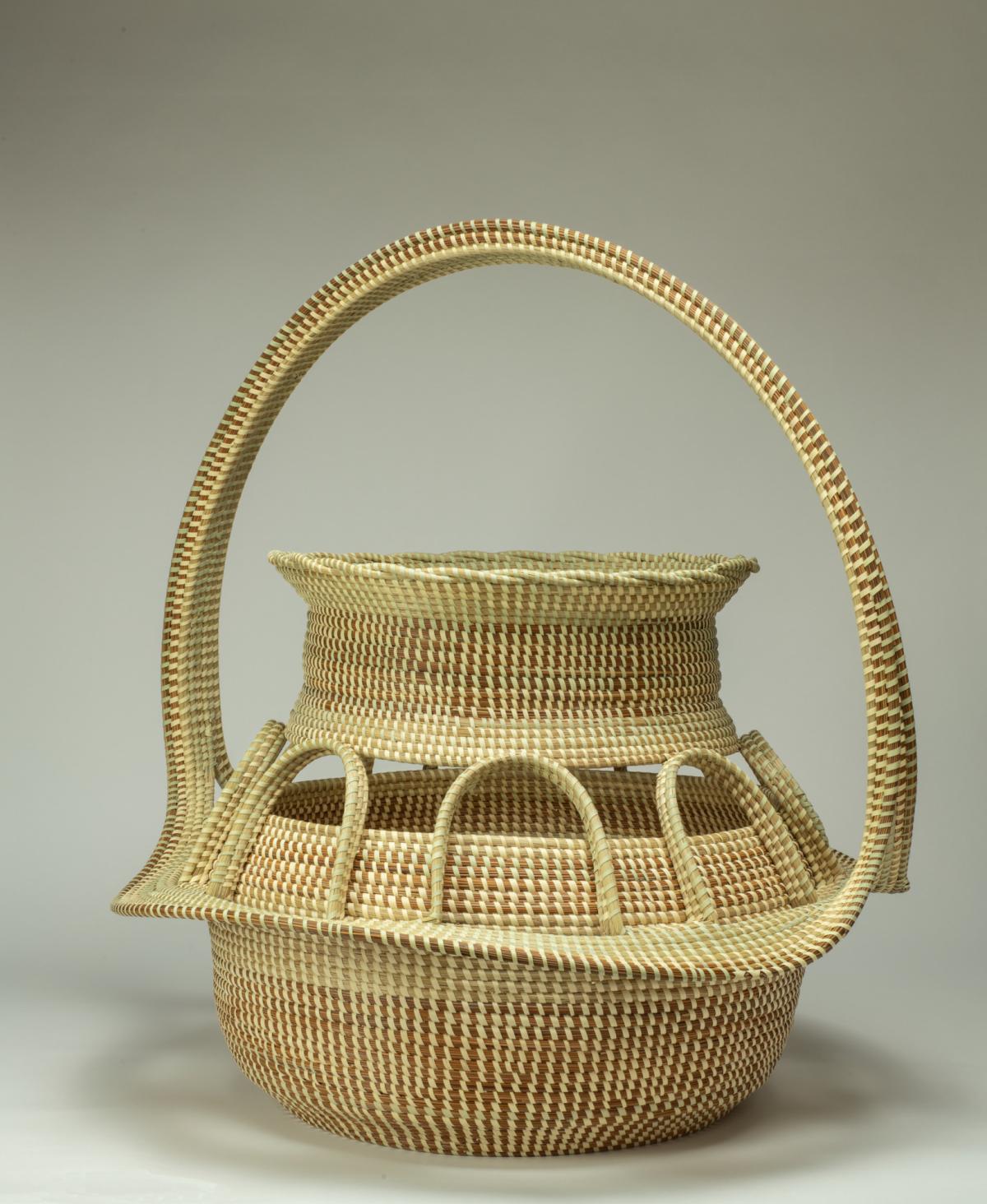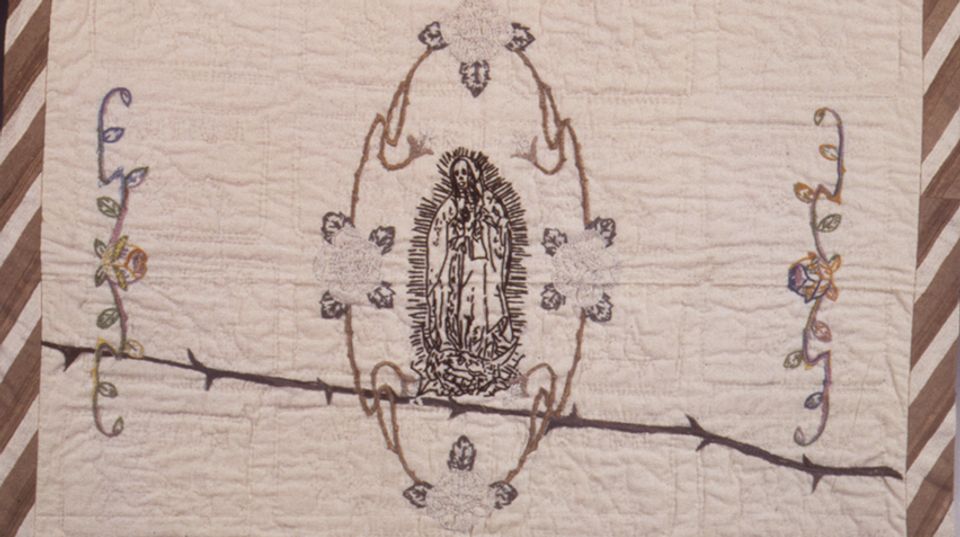From Traditional to Contemporary is the most ambitious basket completed to date by Gullah weaver Corey Alston and is in the permanent collection of the Smithsonian American Art Museum. Born into a family of blacksmiths, Alston did not learn the craft of basket making as a child like many Gullah weavers. When he married into a family of sweetgrass weavers, his wife’s grandmother, the family matriarch and nationally acclaimed artist Mary Jane Manigault, gave her blessing for Alston to learn the family tradition.
Initially transported from Africa as slaves, Gullah people settled in the Lowcountry of coastal North Carolina, South Carolina, Georgia, and Florida and have been making sweetgrass baskets since the seventeenth century. Alston's From Traditional to Contemporary connects past technique to present form. Early “traditional” baskets were made to aid the cultivation of rice on plantations and later evolved into household items. Alston, a fifth-generation maker, shapes intricate patterns into “contemporary” sculptural baskets using the process of coiling, wrapping the sweetgrass into coils and sewing them together. He is currently teaching his daughter the process, sustaining memory and kinship coil by coil.
This Present Moment: Crafting a Better World marks the 50th anniversary of SAAM’s Renwick Gallery by celebrating the dynamic landscape of American craft. The exhibition explores how artists—especially women, people of color, LGBTQ+, and Native artists—have crafted spaces for daydreaming, stories of persistence, models of resilience, and methods of activism that resonate today. In order to craft a better world, it must first be imagined. This story is part of a series that takes a closer look at selected artists and artworks with material drawn from exhibition texts and the catalogue.
Corey Alston was one of 10 featured artists participating in Crafting a Better Future: The Renwick 50th Anniversary Symposium, which you can watch on SAAM’s YouTube channel.

















